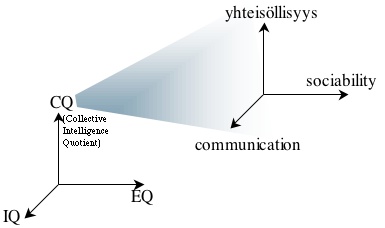6. How to recruit COIN members
Bees assume different roles in their hive during their lifetime (http://dylan1111.com/beekeeping/development.html). In the first days of their adult life, the young bees take care of the hive, by doing the menial task of cleaning the cells. Later, they will tend to the brood, attend the queen, and receive nectar and pollen. Then, they build the honeycomb and ventilate the hive. Only as very mature and experienced individuals will they get in touch with the outside world, initially as guards, making sure that only hive members are let in, and keeping out intruders. In the very end, they will become foragers, the pollen and nectar collectors necessary for the success of the hive.
The same is true for COIN members.
During their time in the COIN, the same member might assume many different roles. Rarely is a new queen bee recruited as a queen bee. Usually, new COIN members join the group as peripheral members, attracted by the vision and the task at hand. They then work their way into the core of the COIN, learning from more seasoned members in this process. This self-organizing nature assures that COIN members share the same genetic mindset.
But this still leaves the question: what are the genes that are the most successful for the survival and growth of the hive. Hives of naturally homogenous composition of members make a good testing ground to study how new swarms are born. The Finns are among the most wired and well-educated people, as well as also quite homogeneous, most likely due to their native language, only spoken by Finns, and their geographic position, at the Northern border of Europe.
Finns are eager users of blogging and social networking. They were among the early adopters of LinkedIn, and they are currently actively embracing Facebook extensions and plug-ins. They even coined a new term for people who buy tech gadgets to obtain the right to belong to their own self-chosen digital tribe. “Yhteisöllisyys” comes from the term yhteisö which means “community” or “society” in Finnish. But as was explained to me, Yhteisöllisyys is more than just the Finnish word for community. It stands for the propensity of people to form communities. These community members are a self-selected group of people who get part of their meaning of life from belonging to virtual communities sharing the same passion, be it for soccer, or for a high-tech gadget. From observing my son playing “world of warcraft” it seems to me that he is definitively part of that Yhteisöllisyys. It is not enough do be part of a virtual community, what counts is to be a passionate member of the virtual community. Surprisingly often, what Finns are passionate about becomes a trend very soon thereafter in the rest of Europe or in the US.
Diverse hives are the most successful
While bees in a swarm are all sisters, there are still genetic differences between the bees, because the queen gets their offspring from different fathers. While bees in the hive give preferential treatment to genetically identical sisters, it turns out that genetically diverse swarms do better. The same is true for Collaborative Innovation Networks. Not only accepting, but actively nurturing diversity in a COIN is a recipe for creative ideas and innovation. The city of Geneva in Switzerland, which provided a safe haven for protestants fleeing persecution during the reformation wars in 1600 thrive until today as a center of high-tech, banking, and international collaboration. The same insights have been confirmed by our social network research, where we found that geographical proximity and diversity increase economic performance. Analyzing hundreds of Biotech startups in Massachusetts, we found that the ones that communicated with many competitors, and even more importantly, with universities and outside research labs, did better than their less talkative sister companies.
